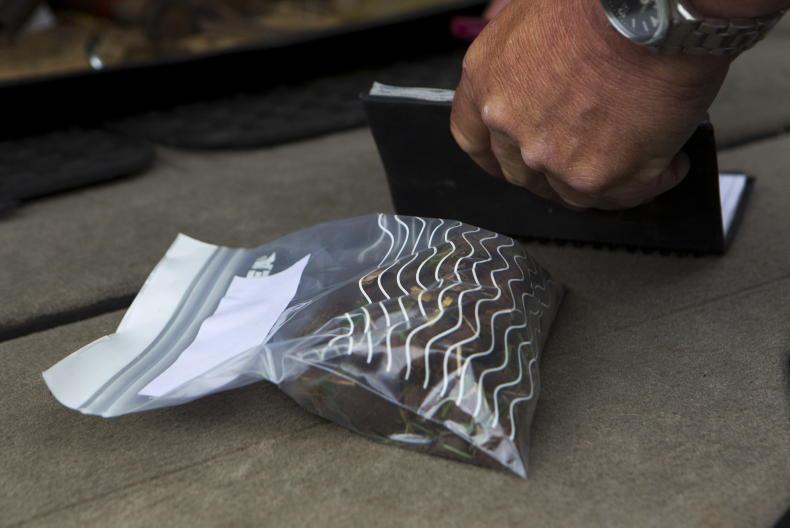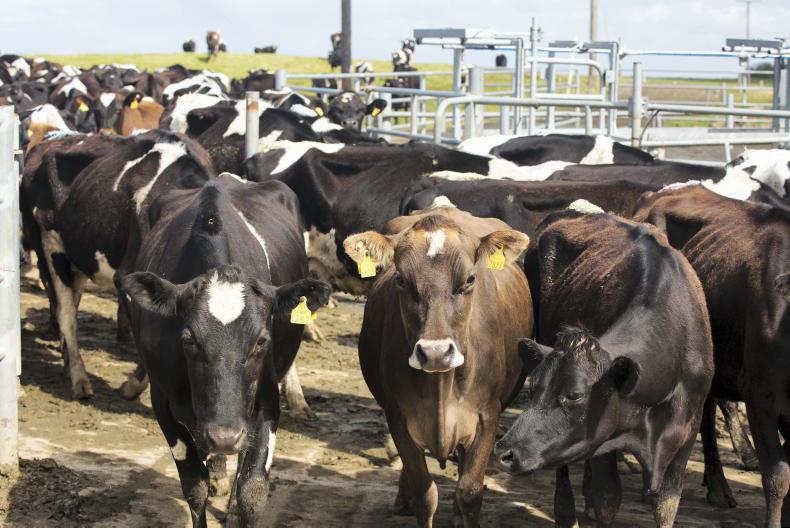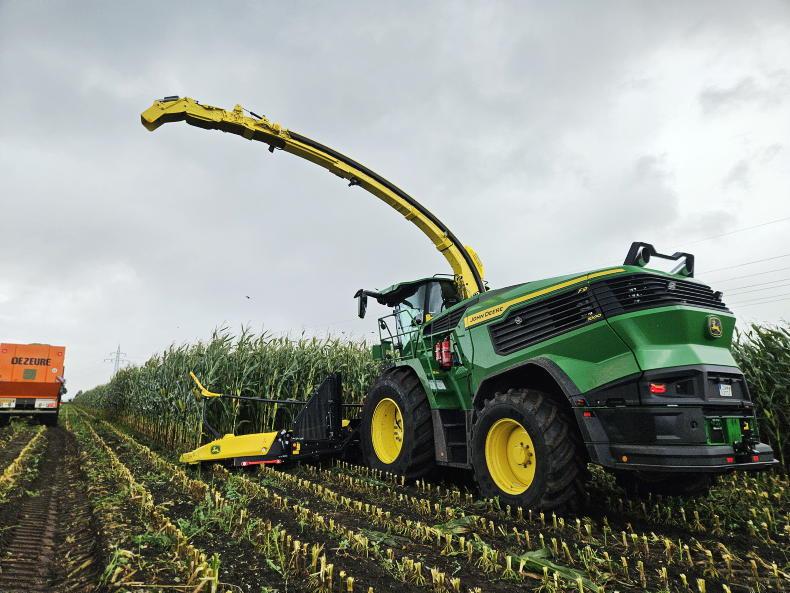For 30 years, variable rate application of inputs, particularly fertiliser, has been considered a cornerstone of precision/digital agriculture. But in practice, it is used very little. In this article, we explain what variable rate application is, and look at the practises involved in adopting it.
Positioning technologies
There are a number of fertiliser spreader systems that use GPS-type positioning.
Basic guidance: simple bout guidance systems have improved spreading accuracy immensely where there are no tramlines. These light-bar or screen based systems use GPS to guide the operator to steer to the correct bout width. Auto-steer: the GPS controller actually steers the tractor, typically with up to two to 15cm accuracy (e.g. RTK) rather than the 20cm to 60cm accuracy used with ‘free’ correction signals. Headland switching: with modern spreaders, turning on and off the spreader when leaving and approaching the headland can be inaccurate, leading to overlap problems. Automated headland switching, using GPS positioning, can do this more accurately. Narrow bout adjustment ( ‘section control’): this technology changes the spread pattern and delivery rate when working on narrower bouts or ‘short’ ground. This is not variable rate application as the aim is to maintain the rate in the narrower bouts. It requires no additional information other than the bout width which is generated from the GPS position signals alone. Variable rate application: the application rate is varied within the field based on variation in factors such as soil, nutrient status or crop growth / N content. So instead of say 120kg N/ha being applied uniformly for a first cut of silage (as 260kg of 46% urea/ha), the rate may vary from 100kg N to 140kg across the field. Why the variable approach?
Most growers manage their inputs including fertiliser, on a field basis with a constant rate applied across the field. But the need for that fertiliser may vary within the field depending on:
Crop yield potential. N variability in crop and soil. Soil pH and levels of P and K. Soil texture, type and depth. Compaction. Drought or water logging. Other factors including aspect,
shading etc. If variable rate application is being considered, we need to know which of these may be causing variability, be able to measure this and know how to respond. The assumption often is that there is a problem that causes low yield and we will then apply more fertiliser.
However , the opposite may be the case – an inherently low yielding area may give the poorest response and should get less fertiliser.
Unless you know that you have
variability and that changing fertiliser application is going to give an economic response (more crop/grass or lower fertiliser cost), there is no point in considering variable rate application.
There are a number of ways that this can be tackled, and you will likely need advisory support in this process.
Yield variability approach
Measure the variation in yield within a field, preferably for a number of years. This is possible with yield mapping combines on tillage farms. It’s more difficult on grassland farms, but still possible provided they are properly set-up and the data is stored.
With grass, silage fields would be a better target than grazed paddocks. While forage harvester yield mapping is available, it’s expensive and rare.
However, there are a multitude of technologies for grass measuring that could be used to measure within-field variability. These include plate meters, cutting quadrats etc, but there is also scope for remote sensing using reflectance type scanners. These can be hand held,
carried on a drone, or on a satellite which will also allow variation within rotationally grazed paddocks to be measured in the future.
It is now also possible to get historic satellite data from all fields where yield variation in previous years can be assessed.
Select zones of variation in the field
From the yield information, if there are areas in the field that have patterns of lower yield then these should be marked on a map and marked for investigation. This could even be done without specific yield information if obvious areas of poor crop growth are visible.
Investigate the cause of the variation
The areas of lower yield should be investigated by using a spade. Soil texture (sandy soils), soil structure (compaction) and soil depth should be assessed. Lower yielding zones should be targeted for individual soil analysis for P, K, pH and any likely trace element deficiencies. Any other possible causes (drains, weed problems) etc should be noted.
Variable rate fertiliser application
If the area has a soil limitation that will always restrict yield regardless of weather, then all fertiliser elements in that area could be reduced to save money. This can be calculated from the reduced crop offtake. But a sandy free draining soil may yield poorly in a dry season but well in a wet season. If there is a nutrient (e.g. P, K) or lime deficiency, then the rate of these can be increased within these zones to
rectify the problem and raise yield potential.
Develop an application map
This can easily be carried out with mapping software available from a multitude of sources (some free), where you can map out the application zones within a field and you can prescribe a fertiliser application rate to those specific zones.

Variable rate applications maps can be establsihed through yield maps analysis.
This map (on a USB key, or transferred via cloud) can then be transferred to your variable rate enabled spreader, to automatically control the application rate as the spreader moves across the various zones in the field.
Where soil nutrient or lime deficiency is suspected, an alternative to the zone approach is to ‘grid’ sample the field
taking individual soil samples every hectare
or less and then to produce an application map based on the measured variation.
Ideally you would like the grids to be quite small (25 x 25m), but this would be very expensive (€17 per ha). However, soil analysis is likely to change over the next decade making high resolution sampling possible.
Crop reflectance
For variable nitrogen application in crops like wheat, an approach where the N content and biomass of the crop are scanned by a crop reflectance scanner can be used. These sensors measure the intensity of what we mostly see as green.
Typically fitted to the tractor that’s spreading, they scan the crop and in real-time adjust the rate based on the N in the crop. Usually, the operator sets the overall application rate, allowing the sensor to increase rates where it ‘sees’ an N deficient area and reduces rates if N is in surplus.
Many tillage growers who use organic manure use N sensing to correct any imbalances in crop N later in the season. Drones or satellites can capture similar data allowing application maps to be generated either.
While the system does give assurance to these growers, controlling N routinely in this way does not necessarily give much better crop performance (yield increases are small, 1 to 2 %).
But if we are limited in the amount of N that we have available in the future, we might be able to target it better with systems like this.
Spreader VRA requirements
For variable rate application, you need a spreader that is fitted with: a GPS controller so that the spreader knows its exact position; a flow monitoring system, either weigh cell based or spreading disc torque sensing, that measures the fertiliser flow; and a controller that continuously calculates application rate and adjusts the rate to that on the application map above.
Most spreaders that have headland control and weighing systems (or similar) have the basic capacity to do this, requiring at most ‘unlocking’ of the variable rate facility.
Conclusion
Variable rate technology is potentially useful, if it allows measured deficiencies in particular areas to be corrected. However, the cause requires careful field investigation. The crop N sensing approach can help assure growers using organic manures and give some fertiliser saving.
For the most part, the benefits to be achieved with all VRA can often be small, and only larger scale growers / farmers who are prepared to invest time should consider it, unless there is a specific problem.
This may change in the future. However, as sensing and measuring technologies develop, and as our nutrient allowances decline.
But today the associated GPS and rate control technology can help get fertiliser spread much more accurately (but at a constant rate) across all of the field, particularly the headlands. These developments are indeed useful.
For 30 years, variable rate application of inputs, particularly fertiliser, has been considered a cornerstone of precision/digital agriculture. But in practice, it is used very little. In this article, we explain what variable rate application is, and look at the practises involved in adopting it.
Positioning technologies
There are a number of fertiliser spreader systems that use GPS-type positioning.
Basic guidance: simple bout guidance systems have improved spreading accuracy immensely where there are no tramlines. These light-bar or screen based systems use GPS to guide the operator to steer to the correct bout width. Auto-steer: the GPS controller actually steers the tractor, typically with up to two to 15cm accuracy (e.g. RTK) rather than the 20cm to 60cm accuracy used with ‘free’ correction signals. Headland switching: with modern spreaders, turning on and off the spreader when leaving and approaching the headland can be inaccurate, leading to overlap problems. Automated headland switching, using GPS positioning, can do this more accurately. Narrow bout adjustment ( ‘section control’): this technology changes the spread pattern and delivery rate when working on narrower bouts or ‘short’ ground. This is not variable rate application as the aim is to maintain the rate in the narrower bouts. It requires no additional information other than the bout width which is generated from the GPS position signals alone. Variable rate application: the application rate is varied within the field based on variation in factors such as soil, nutrient status or crop growth / N content. So instead of say 120kg N/ha being applied uniformly for a first cut of silage (as 260kg of 46% urea/ha), the rate may vary from 100kg N to 140kg across the field. Why the variable approach?
Most growers manage their inputs including fertiliser, on a field basis with a constant rate applied across the field. But the need for that fertiliser may vary within the field depending on:
Crop yield potential. N variability in crop and soil. Soil pH and levels of P and K. Soil texture, type and depth. Compaction. Drought or water logging. Other factors including aspect,
shading etc. If variable rate application is being considered, we need to know which of these may be causing variability, be able to measure this and know how to respond. The assumption often is that there is a problem that causes low yield and we will then apply more fertiliser.
However , the opposite may be the case – an inherently low yielding area may give the poorest response and should get less fertiliser.
Unless you know that you have
variability and that changing fertiliser application is going to give an economic response (more crop/grass or lower fertiliser cost), there is no point in considering variable rate application.
There are a number of ways that this can be tackled, and you will likely need advisory support in this process.
Yield variability approach
Measure the variation in yield within a field, preferably for a number of years. This is possible with yield mapping combines on tillage farms. It’s more difficult on grassland farms, but still possible provided they are properly set-up and the data is stored.
With grass, silage fields would be a better target than grazed paddocks. While forage harvester yield mapping is available, it’s expensive and rare.
However, there are a multitude of technologies for grass measuring that could be used to measure within-field variability. These include plate meters, cutting quadrats etc, but there is also scope for remote sensing using reflectance type scanners. These can be hand held,
carried on a drone, or on a satellite which will also allow variation within rotationally grazed paddocks to be measured in the future.
It is now also possible to get historic satellite data from all fields where yield variation in previous years can be assessed.
Select zones of variation in the field
From the yield information, if there are areas in the field that have patterns of lower yield then these should be marked on a map and marked for investigation. This could even be done without specific yield information if obvious areas of poor crop growth are visible.
Investigate the cause of the variation
The areas of lower yield should be investigated by using a spade. Soil texture (sandy soils), soil structure (compaction) and soil depth should be assessed. Lower yielding zones should be targeted for individual soil analysis for P, K, pH and any likely trace element deficiencies. Any other possible causes (drains, weed problems) etc should be noted.
Variable rate fertiliser application
If the area has a soil limitation that will always restrict yield regardless of weather, then all fertiliser elements in that area could be reduced to save money. This can be calculated from the reduced crop offtake. But a sandy free draining soil may yield poorly in a dry season but well in a wet season. If there is a nutrient (e.g. P, K) or lime deficiency, then the rate of these can be increased within these zones to
rectify the problem and raise yield potential.
Develop an application map
This can easily be carried out with mapping software available from a multitude of sources (some free), where you can map out the application zones within a field and you can prescribe a fertiliser application rate to those specific zones.

Variable rate applications maps can be establsihed through yield maps analysis.
This map (on a USB key, or transferred via cloud) can then be transferred to your variable rate enabled spreader, to automatically control the application rate as the spreader moves across the various zones in the field.
Where soil nutrient or lime deficiency is suspected, an alternative to the zone approach is to ‘grid’ sample the field
taking individual soil samples every hectare
or less and then to produce an application map based on the measured variation.
Ideally you would like the grids to be quite small (25 x 25m), but this would be very expensive (€17 per ha). However, soil analysis is likely to change over the next decade making high resolution sampling possible.
Crop reflectance
For variable nitrogen application in crops like wheat, an approach where the N content and biomass of the crop are scanned by a crop reflectance scanner can be used. These sensors measure the intensity of what we mostly see as green.
Typically fitted to the tractor that’s spreading, they scan the crop and in real-time adjust the rate based on the N in the crop. Usually, the operator sets the overall application rate, allowing the sensor to increase rates where it ‘sees’ an N deficient area and reduces rates if N is in surplus.
Many tillage growers who use organic manure use N sensing to correct any imbalances in crop N later in the season. Drones or satellites can capture similar data allowing application maps to be generated either.
While the system does give assurance to these growers, controlling N routinely in this way does not necessarily give much better crop performance (yield increases are small, 1 to 2 %).
But if we are limited in the amount of N that we have available in the future, we might be able to target it better with systems like this.
Spreader VRA requirements
For variable rate application, you need a spreader that is fitted with: a GPS controller so that the spreader knows its exact position; a flow monitoring system, either weigh cell based or spreading disc torque sensing, that measures the fertiliser flow; and a controller that continuously calculates application rate and adjusts the rate to that on the application map above.
Most spreaders that have headland control and weighing systems (or similar) have the basic capacity to do this, requiring at most ‘unlocking’ of the variable rate facility.
Conclusion
Variable rate technology is potentially useful, if it allows measured deficiencies in particular areas to be corrected. However, the cause requires careful field investigation. The crop N sensing approach can help assure growers using organic manures and give some fertiliser saving.
For the most part, the benefits to be achieved with all VRA can often be small, and only larger scale growers / farmers who are prepared to invest time should consider it, unless there is a specific problem.
This may change in the future. However, as sensing and measuring technologies develop, and as our nutrient allowances decline.
But today the associated GPS and rate control technology can help get fertiliser spread much more accurately (but at a constant rate) across all of the field, particularly the headlands. These developments are indeed useful.











SHARING OPTIONS